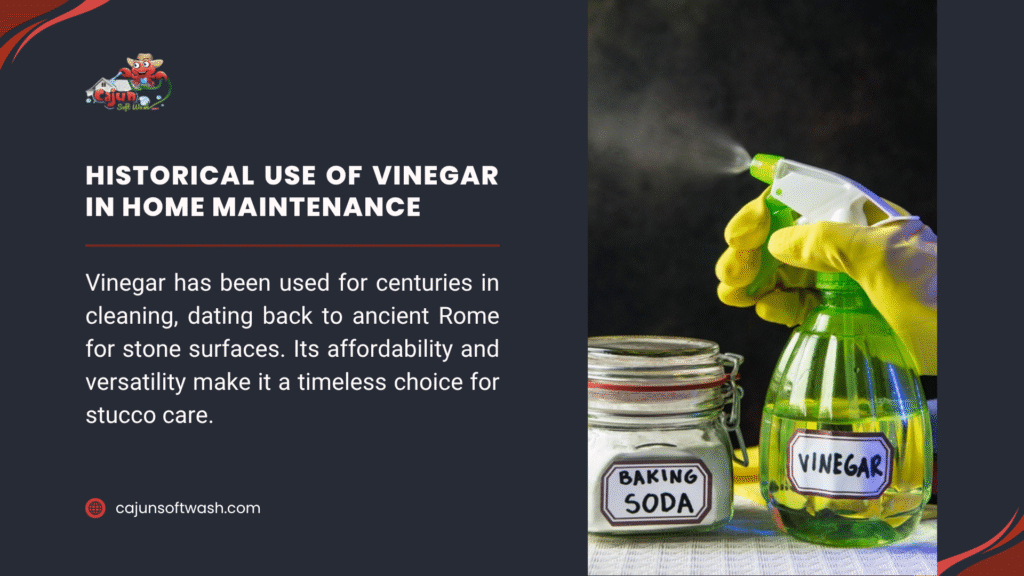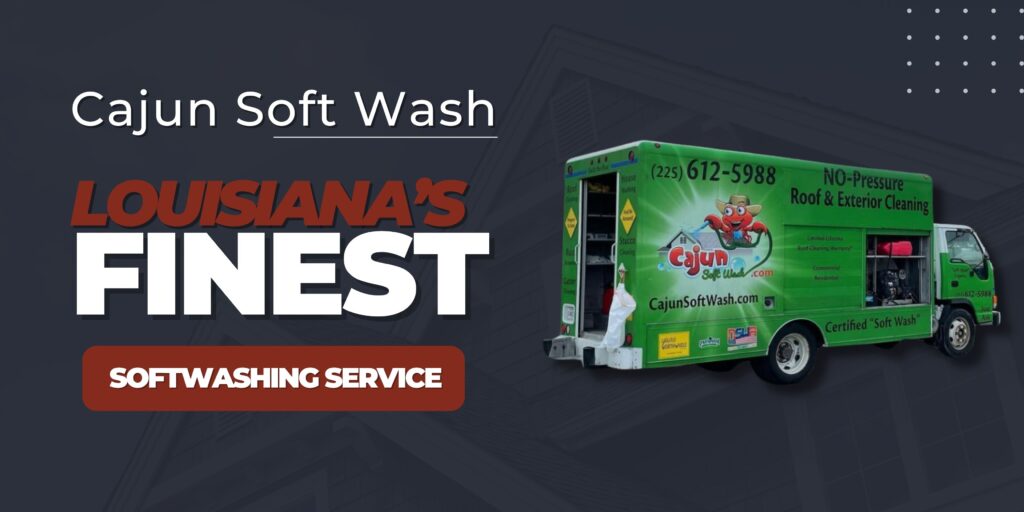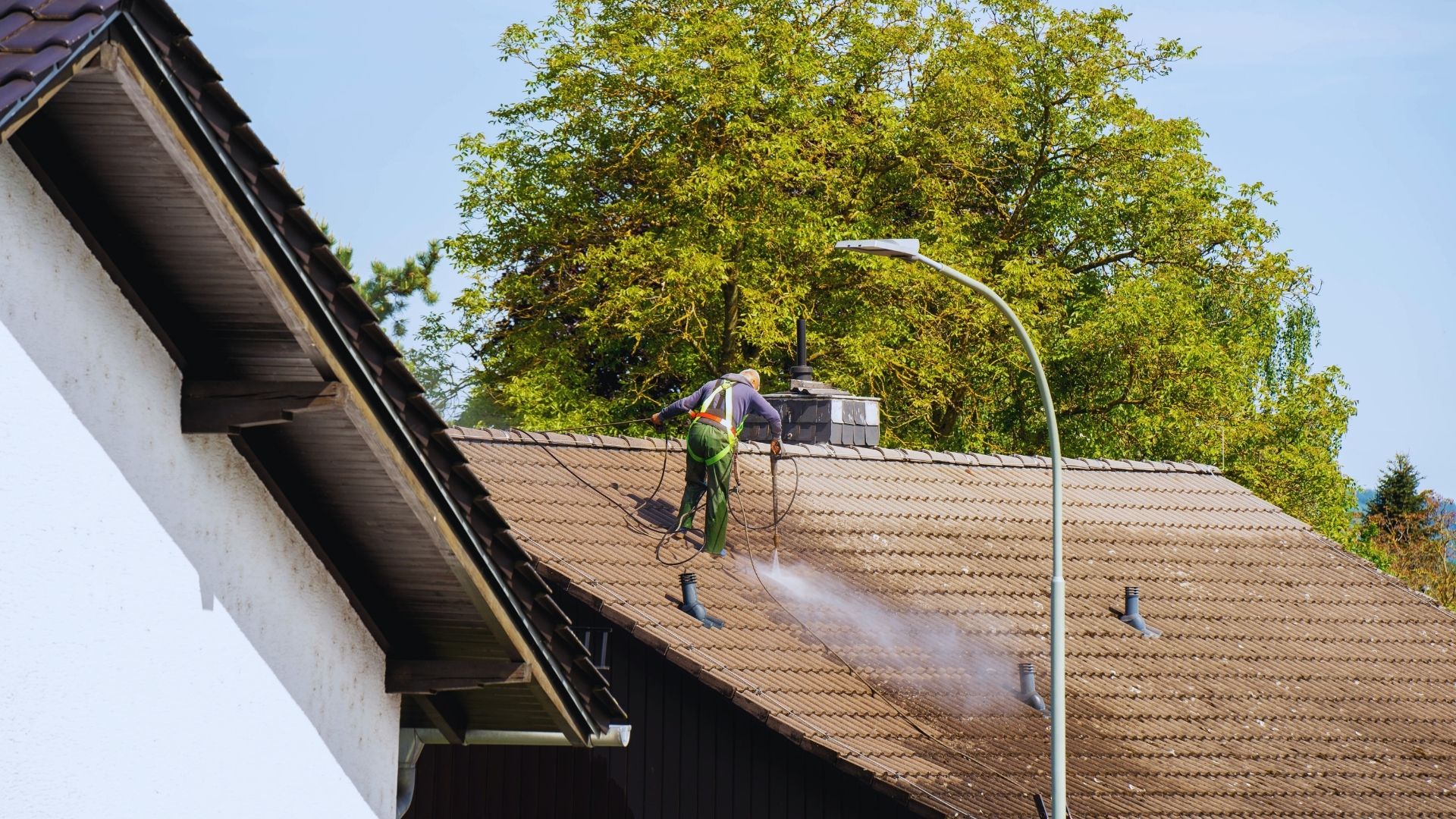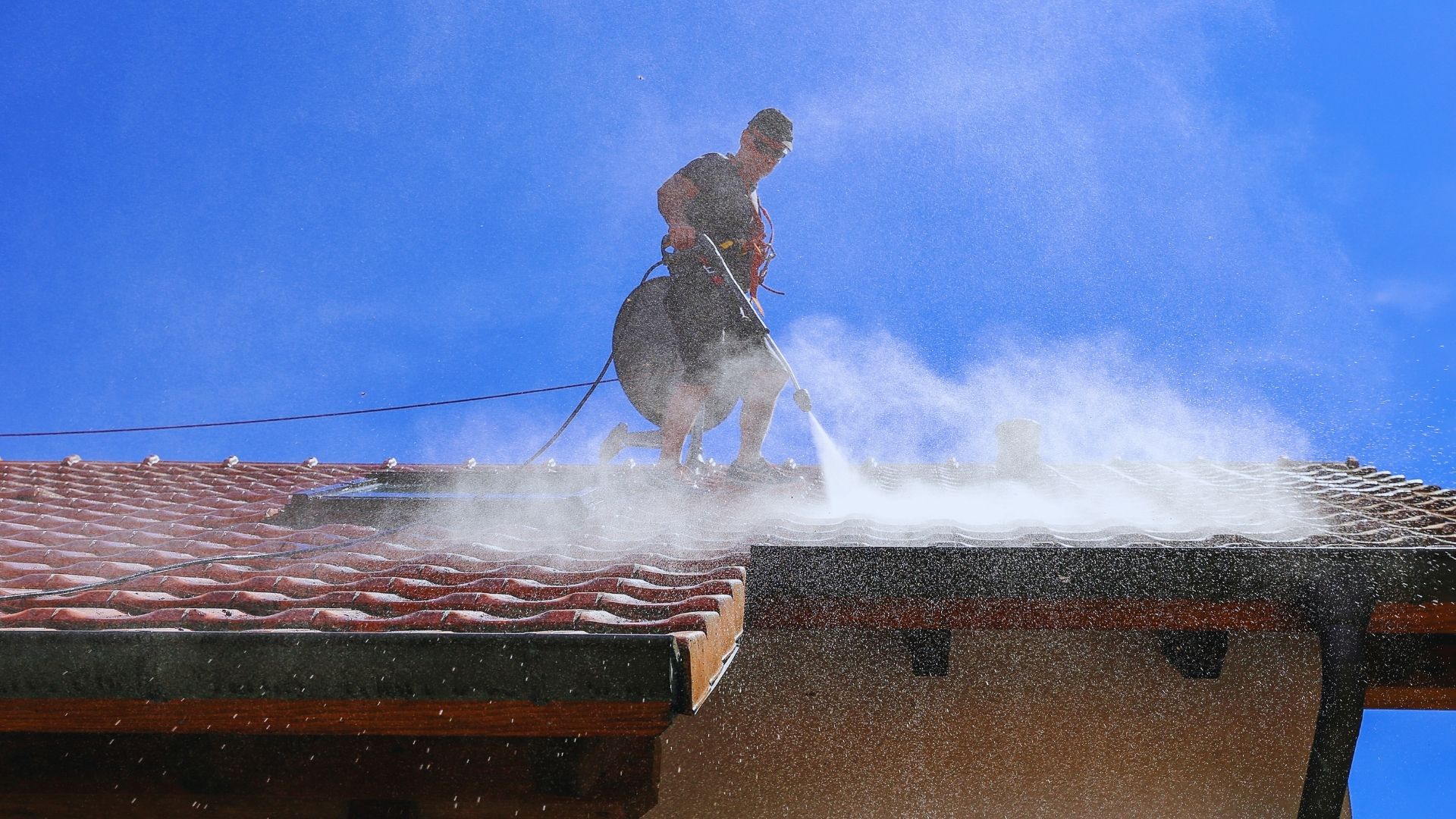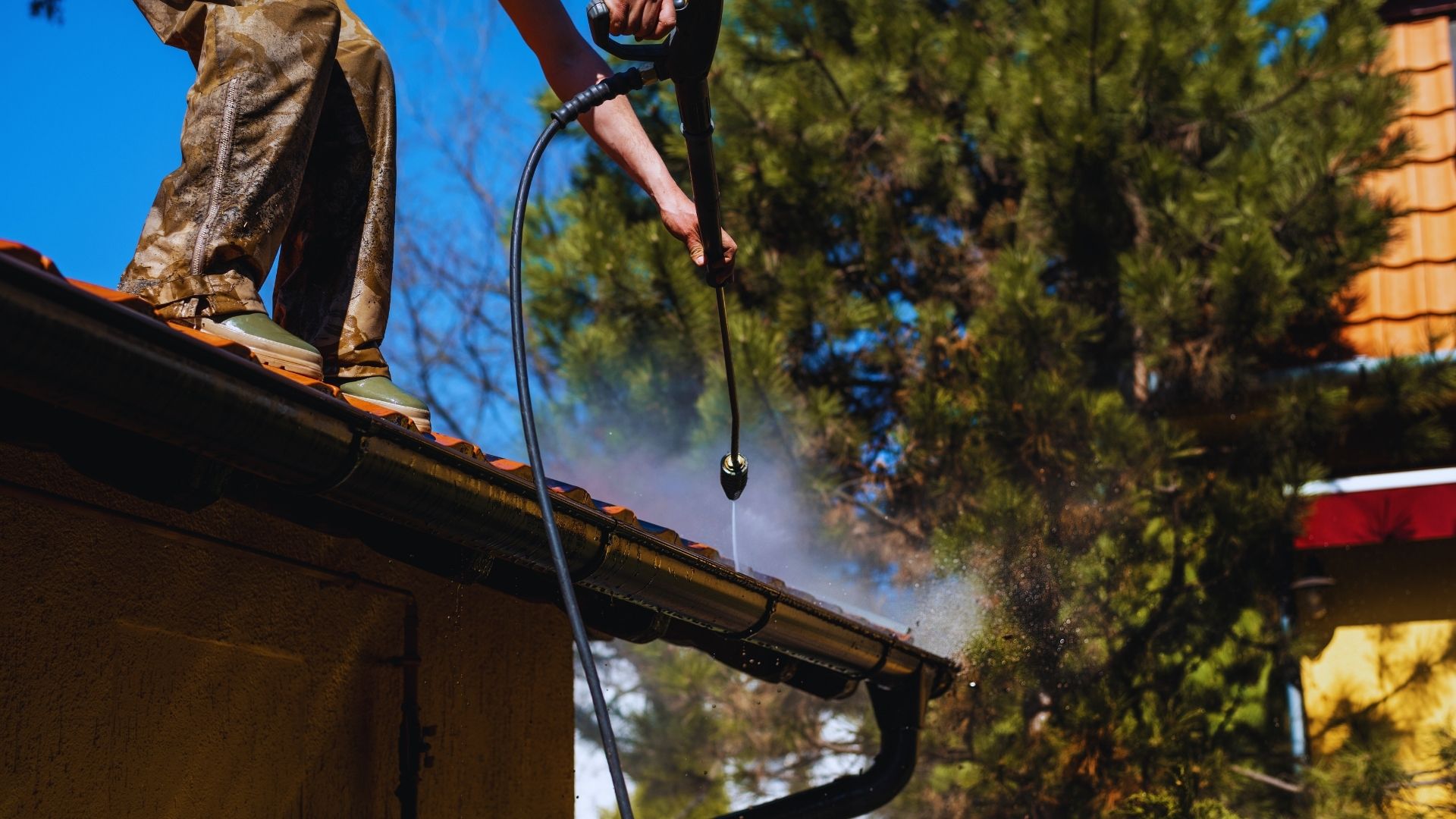Most homeowners dread looking at their stucco walls come spring cleaning time. Years of weather, dirt, and grime can make even the nicest homes look run-down and neglected.
While many people assume they need expensive professional cleaning or harsh chemicals, there’s actually a simple solution sitting in most kitchen pantries.
Cleaning stucco with vinegar has become increasingly popular among homeowners who want effective results without breaking the bank or using harsh chemicals around their families. The method works, but like most DIY projects, there’s a right way and several wrong ways to go about it.
Why Vinegar Actually Works on Stucco
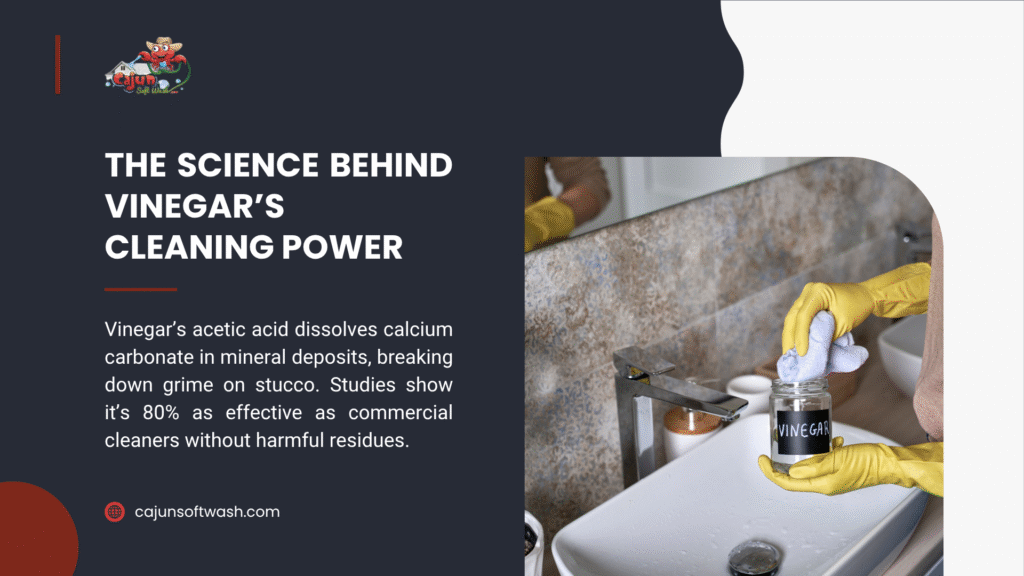
Stucco’s porous, textured surface acts like a giant dirt magnet. All those little bumps and crevices trap everything from pollen to pollution, creating layers of grime that regular soap and water can’t penetrate effectively.
Vinegar’s mild acidity breaks down mineral deposits and organic buildup without being harsh enough to damage the stucco itself. Unlike bleach or other strong chemicals that can leave permanent discoloration, vinegar works gently while still providing serious cleaning power.
The bonus benefit comes from vinegar’s natural antimicrobial properties. In humid climates where mold and mildew thrive on exterior surfaces, regular vinegar cleaning helps prevent regrowth and keeps surfaces cleaner longer.
Essential Supplies (Skip the Expensive Stuff)
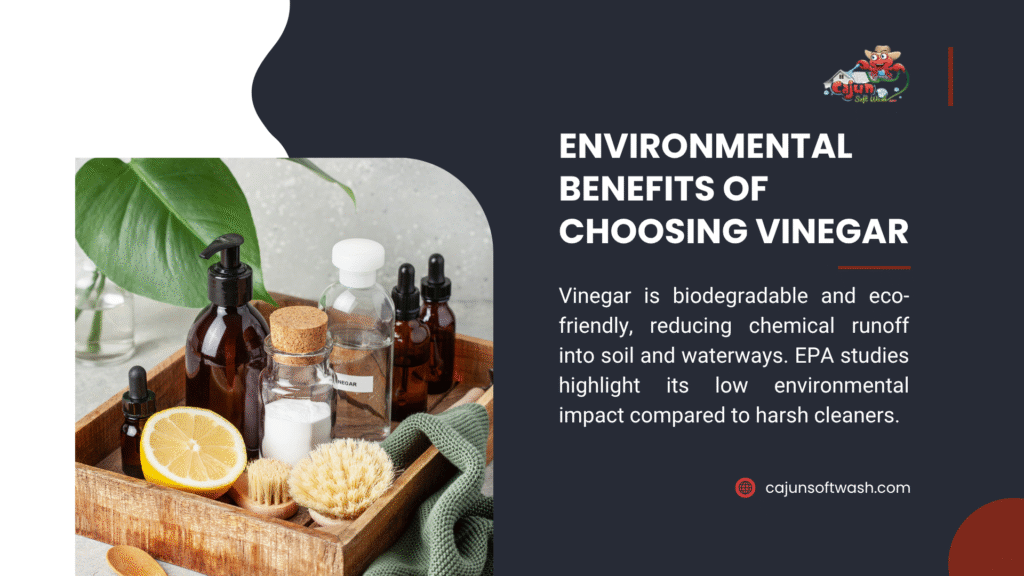
| Actually Needed | Why It Works | Don’t Waste Money On |
| Plain white vinegar | Same cleaning power as specialty products | “Professional-grade” stucco cleaners |
| Garden hose with spray nozzle | Adequate pressure for thorough rinsing | Pressure washers (can damage stucco) |
| Soft-bristled brush or old paintbrush | Gentle enough for texture, effective for scrubbing | Expensive multi-tool cleaning brushes |
| Plastic sheeting | Protects landscaping from overspray | Nothing (dead plants cost more than drop cloths) |
Most homeowners already have everything needed or can pick up supplies for under $30 at any hardware store.
The Process That Actually Works
Make sure to stick to this process before cleaning stucco.
Look at the Weather Before Continuing
Weather conditions make a huge difference in results. Hot, sunny days cause solutions to evaporate before they can work effectively, while windy conditions make application difficult and wasteful. Overcast days or early morning hours typically provide the best conditions.
Preparation Steps
Remove any loose debris, spider webs, or vegetation growing against the walls. Cover nearby plants and outdoor furniture with plastic sheeting – vinegar won’t kill plants, but the concentration used for cleaning can stress them unnecessarily.
Mixing the Solution
A ratio of 1 part vinegar to 3 parts warm water handles most cleaning situations effectively. For heavily soiled areas or stubborn stains, the ratio can be increased to 1:2, but testing on an inconspicuous area first prevents unwanted surprises.
Application Technique
Working from bottom to top prevents dirty solutions from running down over already-cleaned areas. Apply the mixed solution generously and allow 10-15 minutes of contact time before scrubbing. This waiting period lets the acid break down buildup, making the actual cleaning much easier.
Scrubbing and Rinsing
Gentle scrubbing with a soft brush follows the natural texture of the stucco rather than working against it. Thorough rinsing removes all cleaning residue – any leftover vinegar will continue working and may cause uneven coloring or water spots.
Professional Tips for Better Results
Planning the work in manageable sections prevents fatigue and ensures consistent results. Most homeowners find that cleaning one side of their house per weekend keeps the project from becoming overwhelming while maintaining quality standards.
The vinegar smell dissipates completely within 24-48 hours once the surfaces dry thoroughly. Homeowners concerned about vinegar odor can plan cleaning projects before leaving for weekend trips or extended periods away from home.
Some staining may be permanent, especially on older stucco that’s been neglected for years. Setting realistic expectations prevents frustration when certain discoloration doesn’t completely disappear despite thorough cleaning efforts.
Recognizing When Cleaning Stucco with Vinegar Might Not Be the Best Option
DIY cleaning works well for regular maintenance and the most common staining issues. However, certain situations call for professional expertise and equipment that most homeowners don’t possess.
Extensive mold growth covering large areas may indicate underlying moisture problems that need addressing beyond simple surface cleaning. Structural damage, significant cracking, or staining that doesn’t respond to reasonable cleaning efforts typically requires professional assessment.
Height considerations also factor into the decision. While homeowners comfortable with ladders can handle single-story applications, two-story homes or complex rooflines present safety risks that professional equipment handles more safely.
Get Professional Results for Your Stucco
Cleaning stucco with vinegar works great for regular maintenance and the most common cleaning challenges. But when you’re dealing with extensive staining, structural concerns, or just want guaranteed professional results without the weekend work, calling in experts makes perfect sense.
Cajun Soft Wash specializes in safe, effective stucco cleaning that protects your investment while delivering the results homeowners want. Their team understands the nuances of different stucco types and environmental challenges that affect cleaning success.
Don’t let dirty or stained stucco detract from your home’s appearance when professional solutions are readily available. Check out our exterior cleaning services and discover what proper equipment and expertise can do for your property’s curb appeal.
